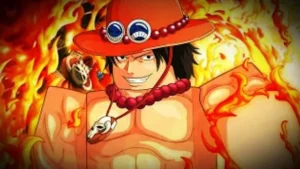
Punk rock, a genre that emerged in the mid-1970s, has left an indelible mark on music and culture worldwide. Known for its raw energy, rebellious spirit, and DIY ethos, punk rock quickly became a powerful voice for dissent and a catalyst for social change. At the heart of this movement are the punk rock artists themselves – individuals who defied convention, challenged authority, and reshaped the musical landscape. This article explores the evolution, influence, and enduring legacy of punk rock artists over the past five decades.
Origins and Early Influences
Punk rock originated in the United States and the United Kingdom as a reaction against the perceived excesses and complacency of mainstream rock music of the 1970s. Influenced by earlier rock ‘n’ roll acts like The Stooges, The Velvet Underground, and MC5, punk rock stripped away the polish and virtuosity of its predecessors in favor of a more direct, abrasive sound. Bands like Ramones, The Clash, and Sex Pistols emerged as pioneers of the genre, defining its sound and aesthetic.
The Rise of Punk Icons
- Ramones: Formed in New York City in 1974, Ramones distilled rock ‘n’ roll to its most basic elements – short, fast songs with catchy melodies. Their self-titled debut album, released in 1976, laid the groundwork for punk rock’s sonic blueprint.
- Sex Pistols: Hailing from London, Sex Pistols became notorious for their confrontational lyrics and anarchic stage presence. Songs like “Anarchy in the UK” and “God Save the Queen” captured the disillusionment and anger of British youth in the late 1970s.
- The Clash: Combining punk’s aggression with reggae, ska, and rockabilly influences, The Clash brought a political edge to their music. Albums like “London Calling” (1979) showcased their versatility and social commentary.
Diversity and Subgenres
As punk rock spread globally, it diversified into various subgenres, each with its own distinctive style and ethos:
- Hardcore Punk: Bands like Black Flag and Bad Brains embraced a faster, more aggressive sound, emphasizing DIY ethics and social commentary.
- Post-Punk: Artists such as Joy Division and The Cure incorporated elements of art rock and electronic music, exploring darker themes and introspection.
- Pop Punk: Bands like Green Day and Blink-182 brought punk’s energy to mainstream audiences with catchy hooks and relatable lyrics.
Punk Rock’s Influence on Culture
Beyond its musical innovations, punk rock had a profound impact on fashion, art, and politics. The DIY ethos encouraged fans to form their own bands, start record labels, and create zines, fostering a vibrant underground culture. Fashion became a form of rebellion, with ripped clothing, spiked hair, and leather jackets becoming synonymous with the punk aesthetic.
Politically, punk rock challenged social norms and institutionalized power structures. Bands like Dead Kennedys and Crass used their music to critique capitalism, war, and authoritarianism, inspiring a new wave of activism and protest.
The Legacy of Punk Rock Artists Today
Despite evolving musical trends, punk rock continues to resonate with audiences worldwide. Many of its pioneering artists remain influential figures in contemporary music:
- Legacy of Ramones: The Ramones’ influence can be heard in garage rock revival bands like The White Stripes and contemporary punk acts such as The Offspring.
- Impact of Riot Grrrl: Bands like Bikini Kill and Sleater-Kinney brought feminist perspectives to punk rock, paving the way for a new generation of female musicians.
- Global Reach: Punk scenes have flourished in countries as diverse as Japan, Brazil, and Australia, demonstrating the genre’s enduring appeal and adaptability.
Conclusion
In conclusion, punk rock artists have played a crucial role in shaping modern music and culture. From its rebellious beginnings in the 1970s to its global influence today, punk rock continues to inspire artists and activists alike. By challenging conventions, amplifying marginalized voices, and promoting DIY creativity, punk rock artists have left an indelible mark on our cultural landscape. As we look to the future, the spirit of punk rock remains a powerful force for change and self-expression.
References
- Savage, J. (1992). England’s Dreaming: The Sex Pistols and Punk Rock. Faber & Faber.
- Marcus, G. (2011). Lipstick Traces: A Secret History of the Twentieth Century. Harvard University Press.
- McNeil, Legs, and Gillian McCain. (1997). Please Kill Me: The Uncensored Oral History of Punk. Grove Press.
This article has provided a comprehensive overview of punk rock artists, their evolution, and their enduring impact on music and culture.



